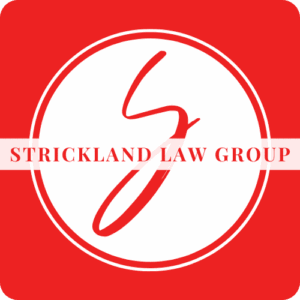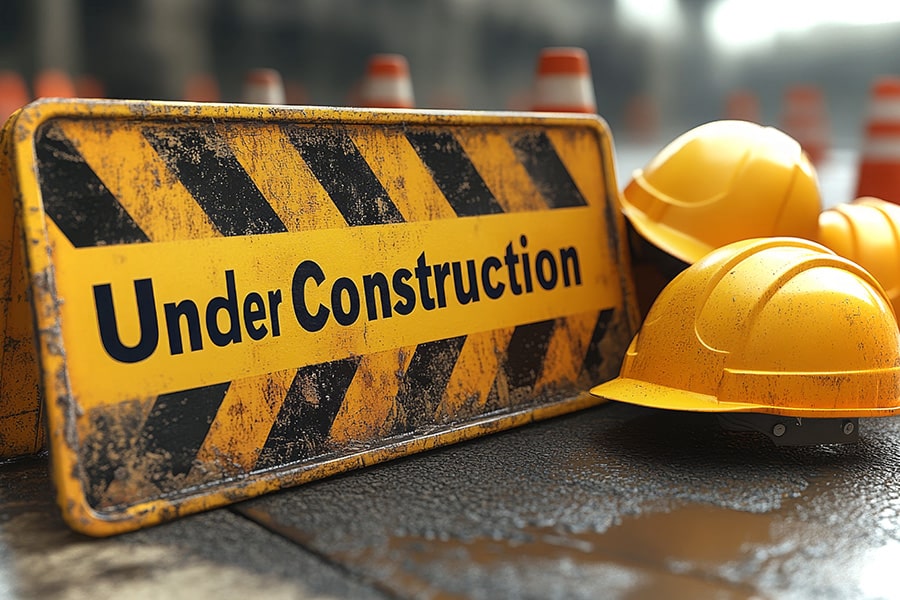If you’ve driven on I-65 through Birmingham lately, or tried to navigate the endless construction on Highway 280, you know Alabama’s highways are a maze of orange cones, sudden lane shifts, and confusing detours. Last year alone, there were over 800 crashes in Alabama work zones, with dozens of fatalities. When you’re hurt in a construction zone accident, figuring out who’s responsible becomes as complicated as navigating the work zone itself.
The Dangerous Reality of Alabama’s Highway Construction Zones
Alabama’s aging infrastructure means constant construction on major highways. Right now, there are active work zones on I-65 from Birmingham to Montgomery, massive I-59/20 improvements through Birmingham, Highway 280 widening projects, and I-10 Mobile River Bridge construction. Each project creates new dangers for drivers who suddenly face narrow lanes with no shoulders, concrete barriers inches from traffic, unexpected stops and lane shifts, uneven pavement and drop-offs, and poor lighting at night.
Michael Strickland, founding attorney at Strickland Law Group, has handled construction zone accidents for over 30 years. “These aren’t normal driving conditions,” he explains. “Drivers are doing everything right, following temporary signs and reduced speeds, when suddenly they hit unmarked hazards or get sideswiped because lanes shifted without warning. The question becomes: who’s responsible for creating that dangerous condition?”
The statistics are sobering. Work zone crashes in Alabama have increased 40% over the past five years. Speed isn’t always the factor – many crashes happen because of confusing signage, inadequate warnings, or construction equipment entering traffic lanes without proper flaggers.
Understanding Multiple Liability in Construction Zone Accidents
Unlike regular car accidents where one driver is usually at fault, construction zone crashes often involve multiple responsible parties. Each entity involved in the work zone has specific duties to keep drivers safe. When they fail, they can be held liable for resulting accidents and injuries.
The Construction Company’s Responsibility
The contractor managing the work zone must maintain safe conditions for passing traffic. This includes providing adequate warning signs well before the work zone, ensuring proper lane markings and temporary striping, maintaining safe detours and crossovers, keeping debris and equipment out of travel lanes, and providing sufficient lighting for night work.
When construction companies cut corners to save money or time, drivers pay the price. Michael Stricklind, partner at Strickland Law Group, notes: “We’ve seen cases where contractors removed old lane markings but didn’t properly mark new lanes. Drivers following what they thought were correct lanes suddenly found themselves in head-on collisions. That’s not driver error – that’s contractor negligence.”
ALDOT and Government Agency Liability
The Alabama Department of Transportation (ALDOT) or local government agencies overseeing construction projects have their own responsibilities. They must properly design work zone traffic patterns, approve and monitor contractor safety plans, ensure adequate inspection of work zones, and respond to known dangerous conditions.
Suing government entities involves special rules and shorter deadlines. You typically have only six months to file a notice of claim against ALDOT or other government agencies, compared to two years for standard injury claims. Missing this deadline can destroy your case completely.
Subcontractor and Equipment Operator Liability
Large highway projects involve dozens of subcontractors – paving companies, barrier installers, striping crews, and equipment operators. Each can be liable if their negligence causes an accident. A dump truck entering the highway without proper warning, a crane operator dropping debris into traffic, or a paving crew creating unmarked drop-offs all create liability for resulting crashes.
Other Drivers in Work Zones
Sometimes another driver causes your construction zone accident by speeding through work zones, ignoring reduced speed limits, following too closely in narrow lanes, making illegal lane changes, or driving distracted through complex traffic patterns. While the construction hazards contributed to the crash, the other driver may bear primary responsibility.
Common Hazards That Cause Alabama Work Zone Accidents
Understanding what went wrong in your construction zone accident is crucial for determining liability. Strickland Law Group has seen patterns in work zone crashes across Alabama highways.
Sudden Lane Shifts Without Warning
The most common cause of work zone crashes is unexpected lane shifts. Drivers traveling at highway speeds suddenly encounter lanes that veer left or right with inadequate warning. By the time they see the shift, it’s too late to adjust safely. These crashes often involve multiple vehicles as drivers swerve to avoid barriers or other cars.
Missing or Confusing Signage
Construction zones require clear, sequential signage to guide drivers safely through changed conditions. When signs are missing, blocked by equipment, or contradictory, drivers must guess the correct path. Wrong guesses lead to serious accidents. We’ve seen cases where old signs weren’t removed, creating confusion about which directions to follow.
Uneven Pavement and Drop-offs
When contractors mill old pavement or create temporary surfaces, they sometimes leave dangerous drop-offs between lanes or at road edges. Motorcycles and small cars can lose control when hitting these unexpected hazards. Even worse, many contractors fail to post warning signs about uneven pavement conditions.
Inadequate Lighting and Visibility
Night construction creates unique dangers. Work zones need proper illumination so drivers can see lane changes, workers, and equipment. When contractors rely solely on vehicle headlights in complex work zones, accidents are inevitable. Glare from work lights that blind drivers creates another serious hazard.
Steps to Protect Your Rights After a Construction Zone Accident
Work zone accidents require immediate action to preserve evidence and identify responsible parties. The construction company will have investigators on scene quickly, looking for ways to blame drivers instead of dangerous conditions.
Document Everything at the Scene
Take extensive photos of the entire work zone, not just the impact area. Capture all signage (or lack thereof), lane markings, barriers, construction equipment, road conditions, and lighting. These conditions change daily as construction progresses, so immediate documentation is critical.
Get contact information from all witnesses, including construction workers if possible. Workers often see multiple accidents in the same location and can testify about dangerous conditions. However, don’t expect cooperation – their employers won’t want them talking to injury victims.
Report Dangerous Conditions
Call 911 and insist officers document the construction zone conditions in their report. Tell them specifically what hazards contributed to your crash. Many officers routinely blame drivers without considering construction hazards, so be persistent about dangerous conditions.
File a complaint with ALDOT about the dangerous work zone. This creates an official record and might prevent future accidents. Your complaint could also reveal previous incidents at the same location, strengthening your claim.
Preserve Your Vehicle
Your vehicle damage tells the story of what happened. Don’t repair anything until your lawyer documents everything. Scrape marks, paint transfers, and impact patterns prove whether you hit a barrier, another vehicle, or road hazards. This evidence counters false claims about driver error.
Why You Need Experienced Construction Accident Lawyers
Work zone accident cases are among the most complex personal injury claims. Multiple defendants mean finger-pointing between construction companies, subcontractors, and government agencies. Each has their own insurance companies and legal teams working to shift blame elsewhere – usually onto you.
Strickland Law Group brings specific advantages to construction zone cases. They understand government claim requirements and meet strict notice deadlines. With over $1 billion recovered and more than 100 trials, they have resources to fight multiple corporate defendants simultaneously. They work with construction safety experts who can identify violations and prove negligence.
Most importantly, they’re not intimidated by big construction companies or government agencies. These defendants often try to overwhelm injury victims with legal procedures and paperwork. Strickland Law Group levels the playing field.
Frequently Asked Questions About Alabama Construction Zone Accidents
Can I sue ALDOT for a dangerous work zone? Yes, but you must follow special procedures. You have only six months to file a notice of claim, and there are specific requirements for what must be included. Government entities also have certain immunities that don’t apply to private contractors.
What if I was speeding in the construction zone? Speeding alone doesn’t bar your claim, but it complicates it under Alabama’s contributory negligence law. If dangerous conditions would have caused the accident regardless of speed, you may still recover. Each case requires careful analysis.
How do I prove the construction company was negligent? This requires investigation into work zone standards, safety plans, and maintenance records. Your lawyer can subpoena documents showing whether proper procedures were followed. Previous accidents at the same location also prove notice of dangerous conditions.
What if I hit construction debris on the highway? Debris falling from construction vehicles or work sites creates clear liability. The challenge is identifying which company or vehicle dropped the debris. Witness statements and traffic cameras become crucial evidence.
Are construction zone accident settlements larger? They can be, especially with multiple liable parties. However, these defendants fight harder because of potentially large exposure. Having experienced trial lawyers who won’t accept inadequate settlements is essential.
What if the construction zone had no warning signs? Failure to warn drivers about construction ahead is serious negligence. Federal and state standards require specific warning distances based on highway speeds. Missing or inadequate warnings create strong liability claims.
Don’t Navigate Construction Zone Claims Alone
Construction zone accidents create complex legal challenges that require experienced representation. Between multiple defendants, government immunity issues, and strict deadlines, these cases can overwhelm injury victims trying to handle claims themselves.
Michael Strickland have spent decades holding construction companies and government agencies accountable for dangerous work zones. They know the regulations, understand the engineering standards, and won’t let defendants blame you for their safety failures.
If you’ve been injured in an Alabama construction or work zone accident, you need lawyers who understand the complexity of these cases. Call Strickland Law Group at 334-269-3230 for a free consultation. They’ll investigate who’s responsible, meet critical deadlines, and fight for maximum compensation from all liable parties. Don’t let construction companies and their insurers blame you for their dangerous work zones.
Legal Disclaimer: This blog post is for informational purposes only and does not constitute legal advice. While efforts have been made to ensure accuracy regarding Alabama construction zone laws and liability standards as of 2025, regulations and specific work zone requirements can change. The six-month notice requirement for government claims should be verified as deadlines vary by jurisdiction and claim type. Statistics about work zone accidents are approximate and should be verified with current ALDOT data. Information about current construction projects may have changed since publication. Details about Strickland Law Group, including attorney experience, case results, and contact information, should be verified directly with the firm. Past results do not guarantee future outcomes. Each construction zone accident case is unique based on specific conditions and circumstances. For legal advice regarding your specific accident, consult with a qualified Alabama personal injury attorney immediately, as strict deadlines apply to construction zone and government entity claims. No attorney-client relationship is created through reading this blog.

